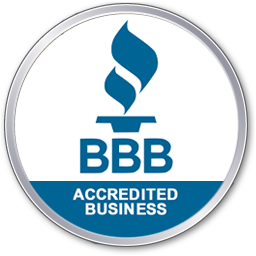The typical U.S. homeowner spent $117.46 per month on their energy bills in 2020, according to the U.S. Energy Information Administration (EIA). You may be aware of how much you’re spending on energy, but do you know where most of that money goes?
Heating and cooling costs amount to 42% of the typical U.S. energy bill, which means homeowners on average are likely spending about $49 per month on heating and cooling alone. Luckily, there are steps you can take to reduce these costs as well as your overall energy consumption. One example is by adding more insulation to your home.
Home insulation refers to any material that helps to control the flow of heat between the inside and outside of your home. In the winter, that means preventing indoor heat from escaping. In the summer, it means keeping outdoor heat from seeping in.
The Environmental Protection Agency (EPA) estimates that U.S. homeowners can save about 15% on heating costs just by air sealing their homes and adding insulation in their attics, crawl spaces and basements, leading to an average savings of 11% on total energy costs.
Insulation also has many benefits besides energy cost savings, which include:
- Increases in energy efficiency
- Noise reduction
- Increased home value
- Benefits to the environment through less carbon dioxide emissions
- Moisture and mold prevention
- Extra protection against natural elements like hail, wind and fire
In 1965, wall insulation became a U.S. building code requirement for constructing new homes. Since then, the rules around home insulation have changed several times, and the materials used to insulate homes have also changed.
Prior to the early 1980s, many insulation products contained a naturally occurring mineral called asbestos. Asbestos is made up of millions of microscopic fibers that are able to withstand fire, water and chemicals, making it a popular choice for creating durable (and cheap) building products. Aside from insulation, asbestos was also used to make:
- Floor tiles
- Roof and siding shingles
- Adhesives
- Cement
- Spray-on coatings
Asbestos in insulation and other building products was partially banned by the EPA in 1981 due to concerns over health risks. If asbestos in insulation is disturbed, such as during a renovation or demolition, asbestos particles can become airborne and be breathed in. Exposure to these particles can impact the safety of both the home’s occupants and contractors.
Despite the partial ban, many homes built prior to 1981 still contain asbestos insulation. Most of these insulation materials contained between 15% and 100% asbestos.
So how do you know if your home contains asbestos insulation? Aside from your home’s age, here are some things to consider.
Types of Asbestos Insulation
Home insulation comes in all shapes and sizes, and asbestos unfortunately wasn’t limited to a specific insulation type or brand. The most common types of residential insulation that may contain asbestos include:
- Blanket insulation: One of the most commonly installed insulations, blanket insulation is often used as thermal and acoustic insulation for walls, ceilings and floors. Asbestos in blanket insulation can quickly become problematic because this asbestos insulation type becomes crumbly as it ages. If this insulation becomes damaged or cut off to be replaced, it can release large quantities of asbestos dust into the air.
- Block insulation: Insulation blocks or boards are typically used in walls and were often made almost purely out of asbestos. Because of this, block insulation that contains asbestos can be a major exposure hazard if the blocks are ever sawed or damaged.
- Loose-fill insulation: Also called blown-in insulation, loose-fill insulation is known for its ability to conform to small spaces without compromising nearby structures. It’s designed to be poured onto attic floors or blown into hollow spaces inside walls or other building structures. This insulation type can be made almost entirely of asbestos and comes with the highest risk of asbestos exposure due to its fluffy consistency, which can be disturbed with something as simple as a gentle air current.
- Spray-on insulation: Spray-on or spray foam insulation is effective for sealing small cracks to block air and moisture. It was developed to reduce the amount of labor needed to apply insulation and fireproofing materials to ceilings, walls and structural home beams. This type of insulation can contain up to 85% asbestos and can be easily disturbed, which creates a high risk for asbestos exposure.
While asbestos can be found in all of these insulation types, the most commonly found asbestos-based insulation is actually vermiculite insulation. Although vermiculite is a naturally occurring mineral in itself, more than 70% of vermiculite sold in the U.S. for more than 70 years came from a mine that also contained asbestos, according to the EPA. This means much of the vermiculite used to make insulation was contaminated.
Vermiculite is known for its brownish-gold appearance and looks like a soil additive. It was commonly sold under the brand name of Zonolite and often used in attics. If you have vermiculite insulation in your home, you should automatically assume it contains asbestos. Vermiculite shouldn’t be a danger to you as long as you aren’t disturbing or handling it. For this reason, it’s important to keep in mind any renovation activities or attic work that might disturb your insulation.
Although asbestos can unfortunately be found in many insulation types, it’s important to remember that the insulation types listed here don’t always contain asbestos. Other insulation materials like fiberglass, cellulose and wool are also commonly used and are considered safe.
Where Asbestos Insulation Can Be Found in Your Home
Just as asbestos in insulation can be found across insulation types, it can also be present in multiple locations throughout your home. The type of insulation used in each spot may provide a hint into how concerned you should be about the presence of asbestos. For example, vermiculite is usually found in attics.
Places where you may find asbestos in insulation include:
- Attics
- Basements
- Crawl spaces
- Floors
- Ceilings
- Walls
Basically, asbestos insulation could be used nearly anywhere around your home if it was built prior to the early 1980s. That’s why it’s important to take potential asbestos insulation into consideration when doing construction work on your home.
Identifying Asbestos Insulation in Portland, OR
While certain types of asbestos insulation, such as vermiculite, are somewhat easy to identify based on their visual characteristics, other types of insulation should undergo asbestos testing. This testing can be dangerous without proper training, so it’s imperative that you have your insulation tested for asbestos by an experienced contractor. Self-testing for asbestos can do more harm than good if asbestos is ejected into the air.
The Oregon Department of Environmental Quality (DEQ) requires an inspector to perform an asbestos survey prior to any demolitions or renovations, as noted in Oregon Administrative Rule (OAR) 340-248-0270.
If there is asbestos in your insulation, it’s important to have it properly disposed of before starting a renovation project. Asbestos abatement services will isolate the contaminated area, remove the affected materials with the proper safety precautions in place and clean the area following removal to ensure no asbestos insulation particles are left behind.
The team at Alpha Environmental is highly skilled in both asbestos testing and asbestos abatement and can help you determine the best way to handle asbestos in insulation. Contact us today for a free quote, or call us at 503-292-5346 for more information.




